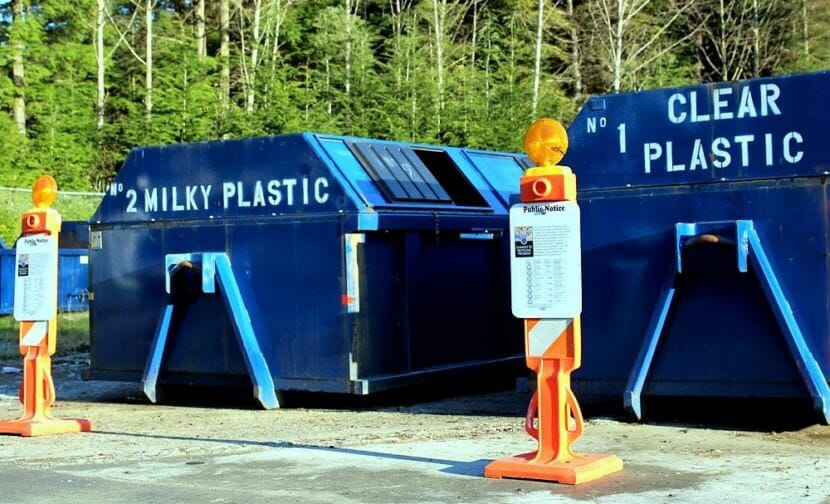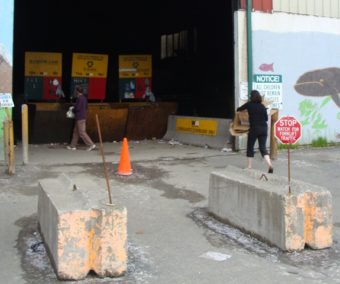
Much of the cardboard, plastic bottles and other items recycled in Alaska end up in China. The East Asia country is about to impose new rules limiting what it will accept.
Here’s how that affects our part of the world.
Locals sort through tubs and boxes of empty bottles and cans on a recent afternoon at Juneau’s recycling center.
They toss aluminum in one bin and plastics numbered 1 and 2 in another. Cardboard has its own place, as does mixed paper. Nearby containers hold glass and tin cans.
Those recycling generally like the idea of reusing items and keeping them out of the nearby landfill.
But soon, that’s going to be a little harder to pull off.
A substantial amount of Alaska’s recycling is shipped to China, where it’s shredded or melted down or both before being turned into new products at that nation’s numerous factories.
“China takes so much of the U.S. materials they have a lot of market power,” said Mary Fisher, executive director of Alaskans for Litter Prevention and Recycling.
She said China will start limiting what it takes at the beginning of next year.

Plastics No. 1 and 2, such as soda bottles and milk jugs, will continue to be accepted.
The same is true for aluminum cans and corrugated cardboard.
But the higher-number plastics, Nos. 3 through 7, — including some takeout food containers, plastic cups and shower curtains — will not.
Neither will mixed paper, such as mail, magazines and newspapers.
“Most communities in Alaska are not accepting mixed plastics like that. So I don’t see that as being a major impact up here. And the mixed paper, a little bit more problematic as China uses a lot of mixed paper,” Fisher said.
A number of Southeast Alaska communities barge their recycling – as well as their garbage – south.
Republic Services has the contract to barge recycling from Ketchikan, Sitka and Petersburg. It recently informed those communities it stopped recycling plastics Nos. 3-7 earlier this month.
Sandra Woods is a municipal landfill specialist for the state.
“What they’ve told everybody is they’re going to accept everything like they have been. But it’s important that the communities know that plastics 3-7 and the mixed paper is going to be landfilled after China no longer accepts it,” she said.
China also is cracking down on what’s called contamination, or too many unrecyclable items, mixed in.
Juneau’s municipal solid waste coordinator Jim Penor blames curbside recycle, which also is done in Juneau, as well as Petersburg.
“When you think of the single-stream recyclable collection program at the curbside, and everybody can just throw in everything all in one bin,” he said. “That, I believe, has created the problem that has increased the percentage of contaminates going to China.”
The new import rules don’t kick in until January.
But Penor said it’s already had an impact on recycling revenue, which helps fund local collection and shipping efforts.
“I was getting approximately $130 a ton for cardboard up until October,” he said. “In October, it went to $40. I was getting $85 to $100 a ton for my plastics. That went to $10.”
He said contamination can only improve at the home or business level – or with expensive sorting.
It is possible China will roll back some of its restrictions before they take effect. Or, they may be short-term.
Penor said it gives large recyclers that take Alaska’s material motivation to look for other customers.
“They’re looking at world markets. Where else can we ship our stuff? We’re shipping it to China. Can we get Vietnam excited about making some manufacturing plants using recycled material from the United States? The Netherlands, Australia, different places,” he said.
Some recyclables haven’t been shipped south to find new uses for a while.
Glass, for example, mostly stays here, due to low prices and high shipping costs. But some places crush it and use it for sand or gravel.
